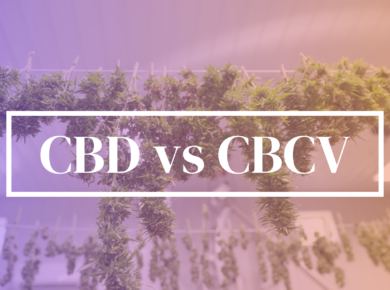CBDa and THCV are two intriguing cannabinoids found in cannabis plants, each boasting its unique chemical structure and effects. Let’s delve deeper into their differences and potential uses in the world of cannabinoid products.
CBDa, or Cannabidiolic Acid, is predominantly found in raw and unheated cannabis, particularly hemp, serving as a precursor to CBD (Cannabidiol) through a process known as decarboxylation. Unlike many cannabinoids, it’s non-psychoactive and doesn’t induce the typical cannabis ‘high’.
In contrast, THCV, or Tetrahydrocannabivarin, is a minor cannabinoid found especially in some strains of African and Asian cannabis. Although it’s a homologue of THC (Tetrahydrocannabinol), it doesn’t deliver the same psychoactive effects, offering a unique profile of effects and benefits.
Many States allow hemp derived cannabinoids under the 2018 Farm Bill as long as they contain less than .3% D9 THC. Some States have explicitly banned cannabinoids like Delta 8, so check your local rules and regulations before purchasing.
Here’s the rules for Kush.com and more details
The Core Differences at a Glance
While CBDa transforms into CBD and doesn’t produce psychoactive effects, THCV is less common and can exhibit psychoactive properties, though not as potent as THC. Both cannabinoids are subject to ongoing research exploring their individual properties and potential applications.
Always be mindful of the legal status of these cannabinoids in your state or country and consult with healthcare professionals before utilization.
Frequently Asked Questions (FAQs)
- How Do CBDa and THCV Differ Chemically and Effectively?
- Answer: CBDa, present in raw cannabis, turns into CBD through decarboxylation and is non-psychoactive. Conversely, THCV can be psychoactive at high doses, albeit with different characteristics compared to THC.
- What Is the Origin of CBDa and THCV in Hemp Plants?
- Answer: CBDa and THCV are derived through the plant’s biosynthesis process, with CBDa directly formed and THCV originating from a conversion process involving cannabigerolic acid (CBGA).
- Are CBDa and THCV Present in All Cannabis Strains?
- Answer: CBDa is widely found, especially in high-CBD strains, while THCV is commonly present in trace amounts, with certain African sativa strains containing higher levels.
- What Distinguishes the Effects of CBDa and THCV?
- Answer: CBDa is recognized for its potential wellness properties without psychoactive effects, while THCV, at higher doses, can exhibit psychoactive properties distinct from THC.
- How Can CBDa and THCV Be Consumed?
- Answer: CBDa is often ingested in raw forms like fresh juice or raw hemp oil, and also in certain CBD products. THCV is commonly inhaled through smoking or vaporizing and is also found in various cannabis-infused products.
Medical Disclaimer
The content provided is strictly for informational and educational purposes and does not substitute professional medical advice. Always consult healthcare providers before using any CBDa or THCV products.
Where to Find Them?
CBDa and THCV products can be found both online and in physical stores, adhering to your local laws and guidelines.




